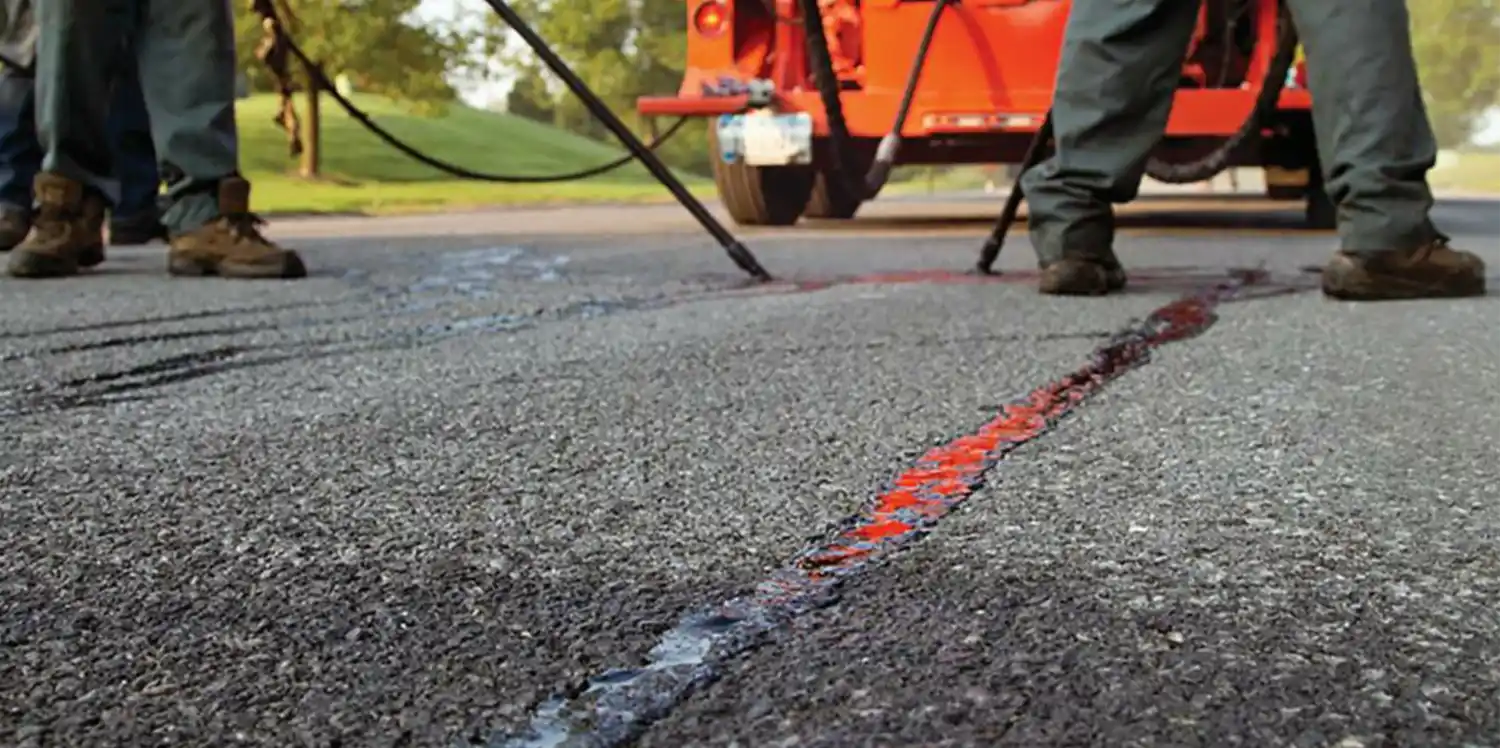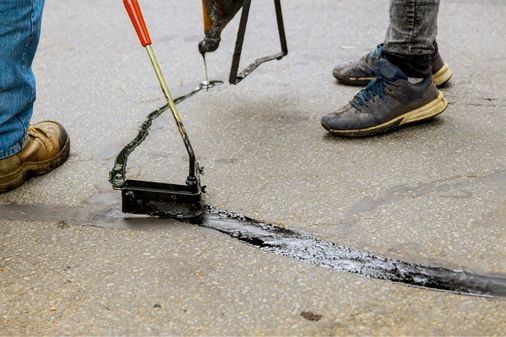

Everything about potholes is bad news. They cause potential safety hazards for vehicles and pedestrians alike, which means….basically everybody. If you’re dealing with potholes or even cracks (which eventually become potholes) please reach out to us as soon as possible for an evaluation. Upon completion of our inspection, we will be able to tell you if the asphalt can and should be patched, or if there’s a larger issue that needs to be addressed to prevent it from happening again in the future. If you need asphalt patching or repair in Minneapolis, you’ve come to the right place.
Asphalt Crack & Pothole Patching
Asphalt is a mixture of aggregates–crushed stone–and binders that act as the glue that holds that mixture together. When freshly paved, asphalt is a deep, rich black color. As the years go by, UV rays from the sun will inevitably break down those binding materials, which allows moisture to seep in and fill in the gaps left behind.
The resulting moisture causes the aggregates to expand and contract, compromising the integrity of the pavement over time. This entire process causes the color of the asphalt to turn from that deep black color to a light, ashy grey color that we see a bit more often out in the world. If this process is allowed to continue, the binding materials weaken to the point of completely losing their bond to the aggregates. This is when cracks and potholes begin to develop. And we don’t want those!
Classic Paving & Masonry has a number of methods for proper asphalt patching to help extend the life cycle of your investment.
Asphalt Repair Methods
Throw-and-Roll – This technique involves a temporary patching method in which liquid asphalt is filled into a hole and then rolled over. When it reacts with the air, the liquid asphalt solidifies and may be applied in layers. This is a good solution in situations where a quick or emergency fix is needed.
Spray Injection – For spray injections, the first step is for special truck-mounted equipment to blow water and debris out of the crack or pothole. Second, aggregate and emulsion is injected into it at an extremely high pressure so that no compaction is required. This method is ideal for adverse conditions and is often preferred to the throw-and-roll method, which is technically only temporary.
Semi-Permanent Patch – First, the surface is properly prepared with the help of a broom or air compressor which removes water and debris. Then, the area requires patching is cut back with a hand tool or power equipment. This prepared hole is then filled with patching mix and compacted with a roller.
Full-Depth Patch – A full-depth patch is considered to be a permanent repair. The patching area is excavated to a depth of 4 inches or more, and extended at least one foot into the surrounding area to provide a firmer support. Then a tack coat mix is applied, followed by the asphalt mix. Finally, a backfill is poured to ensure proper bonding of the aggregate.